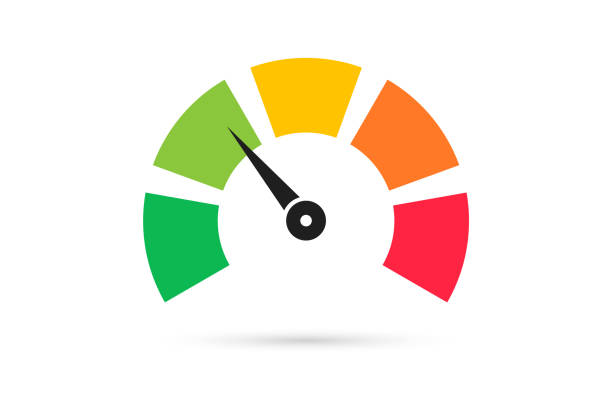Low website traffic for therapists is like a hidden trail, making it hard for clients to find your practice in the vast digital forest. As a therapist, your focus is on supporting clients, but a website with few visitors can feel like a missed connection, leaving your expertise undiscovered. This guide uncovers the reasons behind low website traffic for therapists and provides practical, HIPAA-compliant solutions to boost visibility, attract clients, and grow your practice. From SEO to content strategies, you’ll find clear steps to make your website a beacon for those seeking support. Imagine clients discovering your practice effortlessly, ready to book a session. Partner with Mental Health IT Solutions to unlock your website’s potential and drive traffic today.
Table of Contents
- Why therapists face low website traffic
- Common causes of low traffic
- Benefits of solving traffic issues
- Optimize SEO for better visibility
- Create engaging, compliant content
- Enhance website performance
- Leverage local SEO strategies
- How Mental Health IT Solutions can help
- Conclusion
Why therapists face low website traffic
Low website traffic for therapists can feel like a locked gate, keeping potential clients from accessing your services. When someone searches “therapist near me” or “counseling services,” your website needs to rank high to capture attention. Brighter Vision highlights that most clients rely on search engines to find providers, making visibility essential for therapists. Without optimized SEO, fast load times, or engaging content, your site may remain buried on later search pages, missing opportunities to connect with those who need your help.
Key actions
- Understand search behavior: Recognize that clients use Google to find therapists.
- Prioritize visibility: Aim for top search results to attract clicks.
- Focus on user needs: Ensure your site addresses client pain points.
- Start small: Begin with simple SEO tweaks to see quick wins.
Common causes of low traffic
Uncovering the causes of low website traffic for therapists is like piecing together a puzzle, revealing barriers to client engagement. Poor SEO, such as missing keywords like “therapist [city],” keeps your site hidden from search engines. Slow loading times frustrate visitors, driving them away, as TherapyTribe notes. Lack of fresh content fails to draw repeat visitors, while poor local optimization misses nearby clients. Non-HIPAA-compliant websites risk trust and rankings due to security gaps, further reducing traffic. The table below summarizes these issues and their solutions to guide your efforts.
| Traffic Issue | Solution | Benefit |
|---|---|---|
| Poor SEO | Keyword research, on-page tweaks | Higher search engine rankings |
| Slow Load Times | Image compression, caching | Lower bounce rates, better UX |
| Lack of Content | Regular blogs, videos | More repeat visitors, engagement |
| Weak Local SEO | Google Business Profile, NAP | Increased local client inquiries |
| Non-Compliant Website | HTTPS, secure forms | Enhanced trust, HIPAA compliance |
Key actions
- Identify SEO gaps: Check for missing or weak keywords.
- Test load times: Use tools to spot performance issues.
- Review content: Ensure regular updates to attract visitors.
- Check compliance: Verify your site meets HIPAA standards.
Benefits of solving traffic issues
Solving low website traffic for therapists is like clearing a path, guiding clients directly to your practice. Higher traffic improves SEO rankings, making your site more visible on search engines. It drives more client inquiries, turning visitors into bookings. For therapists, a secure, fast website builds trust, ensuring HIPAA compliance and a professional image. Enhanced user experience keeps clients engaged, encouraging them to explore your services further, per HIPAA Compliance for Therapists.
Key actions
- Boost rankings: Improve SEO to appear on page one.
- Increase inquiries: Convert traffic into client contacts.
- Build trust: Use secure, compliant tools for credibility.
- Engage users: Create a seamless experience to retain visitors.
Optimize SEO for better visibility
SEO is like a spotlight, shining on your website to attract potential clients. To address low website traffic for therapists, keyword research is crucial—use free tools like Ubersuggest to find terms like “counseling [city].” Optimize on-page elements, such as title tags and meta descriptions, with your keywords. Build backlinks from trusted sites like Psychology Today to boost authority. Regular updates signal relevance to Google, driving more traffic over time.
Key actions
Take these steps to optimize SEO:
- Research keywords: Find relevant terms with Ubersuggest.
- Update meta tags: Add keywords to titles and descriptions.
- Earn backlinks: Guest post on mental health blogs.
- Target low-competition keywords: Rank faster with niche terms.
- Optimize headings: Include keywords in H1 and H2 tags.
- Monitor progress: Use Google Search Console to track rankings.
- Update regularly: Refresh pages to maintain relevance.
Create engaging, compliant content
Content is like a warm invitation, encouraging clients to connect with your practice. To solve low website traffic for therapists, create blogs like “5 Ways to Manage Stress” or short videos (under 60 seconds) answering “What to expect in therapy.” Offer HIPAA-compliant resources, like a wellness guide, using secure forms for lead capture. Post weekly (300–500 words) with calls-to-action, like “Schedule a session,” to drive engagement and rankings, per Why Therapists Need a Blog.
Key actions
Take these steps to create content:
- Plan topics: Address client concerns like stress or self-care.
- Add visuals: Use Canva for compliant graphics.
- Post regularly: Schedule weekly updates with Buffer.
- Write short blogs: Create quick, engaging posts to save time.
- Include CTAs: Add “Contact us” to every post.
- Ensure compliance: Use HIPAA-compliant forms for resources.
- Engage readers: Share relatable tips to build trust.
Enhance website performance
A fast, user-friendly website is like a welcoming office, keeping clients engaged and reducing bounce rates. Slow load times or poor mobile responsiveness contribute to low website traffic for therapists. Use Google PageSpeed Insights to aim for load times under 3 seconds. Compress images with TinyPNG, enable caching with W3 Total Cache, and ensure HTTPS for HIPAA-compliant security. Simplified navigation makes booking easy, boosting traffic and trust, per Social Media for Therapists.
Key actions
Take these steps to enhance performance:
- Test speed: Identify issues with GTmetrix.
- Compress images: Use Squoosh to reduce file sizes.
- Enable caching: Install WP Super Cache for speed.
- Optimize for mobile: Ensure a seamless mobile experience.
- Use HTTPS: Secure your site for client confidence.
- Simplify navigation: Create clear menus for easy access.
- Monitor performance: Check speed with Lighthouse regularly.
Leverage local SEO strategies
Local SEO is like a community signpost, guiding nearby clients to your practice. To address low website traffic for therapists, optimize your Google Business Profile with accurate details, photos, and services like counseling. Encourage client reviews to build trust and improve rankings. Ensure consistent Name, Address, and Phone (NAP) info on directories like Yelp. Add local keywords, like “[city] therapy services,” to your content to attract nearby searches, per Lead Generation for Mental Health Professionals.
Key actions
Take these steps for local SEO:
- Claim profile: Set up Google Business Profile fully.
- Gather reviews: Request feedback via email.
- Update NAP: Match info across directories.
- Optimize profile: Add services and photos for visibility.
- Target local keywords: Use city-specific terms in blogs.
- Encourage reviews: Boost credibility with client feedback.
- Check consistency: Verify NAP on all platforms.
How Mental Health IT Solutions can help
Low website traffic can feel like a mystery, but Mental Health IT Solutions is your expert guide, helping therapists boost visibility with tailored strategies. We create HIPAA-compliant, SEO-optimized websites that are fast, mobile-responsive, and secure, protecting client data. Our team handles keyword research, content creation, and local SEO, delivering blogs and videos that attract visitors. We monitor analytics to ensure steady traffic growth, solving low website traffic for therapists with ease. Partner with Mental Health IT Solutions to grow your practice effortlessly.
Key actions
- Get a secure website: Build a fast, compliant site that ranks.
- Create engaging content: Use blogs and videos to draw traffic.
- Boost local visibility: Target your community with SEO.
- Track progress: Monitor analytics for continuous improvement.
Conclusion
Solving the mystery of low website traffic for therapists transforms your online presence into a powerful tool for connecting with clients. This guide has outlined practical, HIPAA-compliant strategies—from SEO optimization to local SEO—that increase visibility and attract inquiries. Each step, from creating engaging content to enhancing performance, acts like a trail marker, leading clients to your practice. Your expertise deserves to be discovered, and these solutions make it happen. Partner with Mental Health IT Solutions to boost your website traffic and thrive today.







